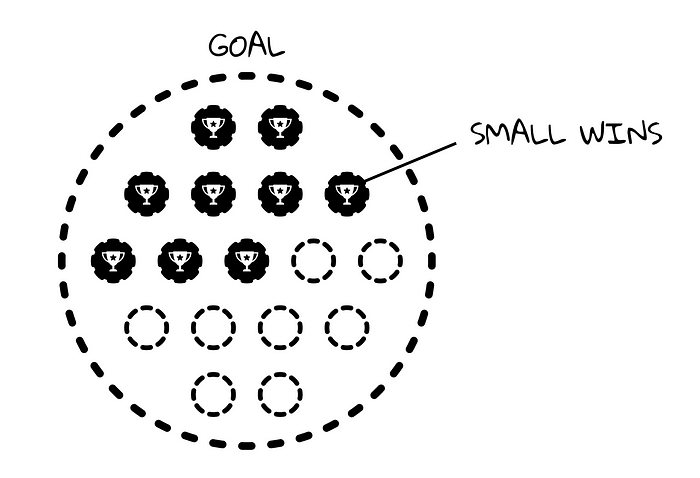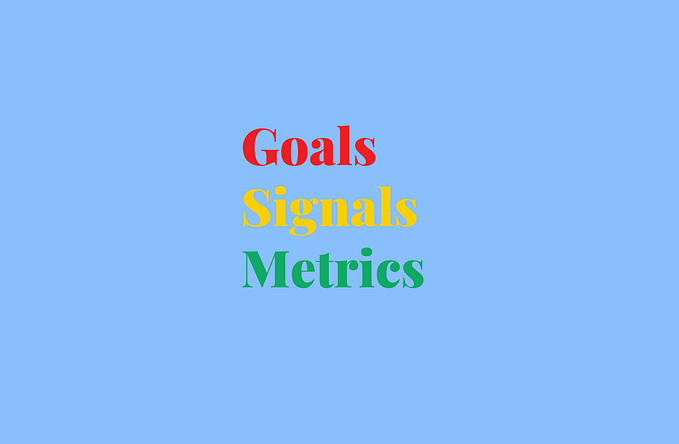Minimal Viable P, or how to adopt a circular design mindset

James Clear talks in his book Atomic Habits about the “habit loop” which is a repeating circular system that we automatically use to create experiences. The brain is continually scanning the environment predicting what will happen next, trying out different responses, and learning from the result. The habit loop is split into two phases:
- Problem Phase with Cue and Craving, and
- Solution Phase with Response and Reward

To summarize:
- Cue is a bit of information that predicts a reward
- Craving is the motivation that leads us to obtain that reward
- Response is the action that we take
- Reward is the achieved goal
If the reward is satisfying, we repeat this behavior until it becomes a habit. Of course, with each loop, we can improve the solution phase.
So this may be a rational explanation for why feedback loops work better than long-lasting linear processes. Because our brain is set by default to streamline each task. It is wired to conserve energy whenever possible. A basic physics principle that helped scientists understand how the Universe works is that the path followed between any two points will always be the path requiring the least energy.
In other words, our real motivation in life is to be lazy and do only what’s convenient.
You don’t agree? Let’s look at UX. Its essence is to eliminate useless friction when using a product, why? Because frictions are obstacles to people achieving goals. The more friction, the less motivation. Today we say, Alexa, play some rock music. This eliminated the friction of having to pull out the phone, plug it into the audio system, search for rock music and then play it. The phone also removed the friction of having to go to the music store and buy a CD.. and so on.
You may say at this point that UX is actually a way to encourage laziness, but actually, without this automation, evolution would not have been possible. But it’s up to us if we see this brain system as a superpower that we have to do good things, or see it as a weakness and take advantage to do bad things.
Now let's dive into how we can actually apply this system of feedback loops in our day-to-day work, useful in a wide variety of contexts and timings.
Minimal Viable Product
The most common concept of MVP (Minimal Viable Product) is the simplest possible product that will be useful and valuable to the intended users.

In the image above MVP’s focus is on value, in this case, transportation. The product needs to take the user from A to B. In the first row, you do not have a useful product until step 4. But in the second row, each step represents a product that can take the user from A to B. You will probably won’t ride a skateboard from Paris to Barcelona but for getting to work and back each day, it’s reasonable.
The primary goal of creating a Minimal Viable Product is not to build something, but instead to learn something. MVP’s are about ideas validation. So that is why startup use this concept making sure that their idea brings value to a pool of users and fits to market. Even tough MVPs don’t require as much resources and time as building the real thing, if users don’t see value in the idea the startups may not have enough founds to continue exploring. So they have low risk tolerance as opposed to larger companies that beside concerns about the reputation and brand if they fail, they have the resources and the time to invest further, so they have high risk tolerance.
Here are some great resources to get started learning all about the MVP concept:
- Running hypothesis-driven experiments using the MVP
- Validating Product Ideas Through Lean User Research
- The Lean Startup book
- The Power of Circular Design Mindset! MVP, systems & more
But the MVP is still a product, so it still requires development or manufacturing, it requires some available resources that startups may not have in the beginning.
So a solution can be to create smaller feedback loops for validation before investing in implementation.
Minimal Viable Prototype
MVP can also refer to a Minimal Viable Prototype. Such a prototype doesn’t need to be a functional product, but just to simulate the real thing. It should showcase 3–4 core use cases that can be based on assumptions which you test and learn from, and allow you to move forward into execution with a viable concept.
For digital products using tools like Figma, Invision or Adobe XD (to name a few) you can now bring these prototypes very close to a real product simulation in terms of experience.
Minimal Viable Process
If you’re using Waze to drive to work, after you chose the destination the app will probably recommend you a number of roots to take. You will choose one, usually the fastest. But during the drive maybe you’ve notice that sometimes the app notifies you that it found a fastest route to help you avoid traffic jams or other events on the road. So for once, the fastest route changed because of some unpredictable events. So it may save you some time and gas. But at the same time, zooming out a bit, you can chose to go to work with your bike. It will save you gas and maybe time because it’s easier to avoid traffic jam and it’s easier to park, it will improve your health, and will have no negative impact on the environment.
So when you think of a process the fastest way to achieve a goal it doesn’t necessarily need to be a straight line or contain the most obvious choices or the most comfortable ones. You need to choose those steps that can bring multi-layered value.
If you are a startup and want to build an MVP maybe you exclude development and do a prototype, maybe you exclude the prototype and validate your concept with potential customers, or maybe you exclude the concept and validate your idea through a survey or other research methods.
No mather the context you are in, you should always choose the fastest path to get valuable feedback. Creating a system of closed feedback loops, can help you be a lot more flexible and dynamic when it comes to validation or even pivoting.
Minimal Viable Progress
Vision, value, ROI, Impact, Objectives, Goals, Deadlines, Milestones, Planning, Sprints, Demo, Colors, Fonts, Smaller, Bigger… do some UX for this button!?
I find it hard to believe that you think of all of these things daily or all at once. Sometimes, with all these buzzwords, opinions, and requirements flying around it’s hard to concentrate, to see things clearly, so you get stressed and start scrolling on social media to distract yourself from the burden. And then you retire to your creative box to think outside the box.
This is a pitfall that often designers, but not only them, get stuck in. It leads to a lack of motivation and procrastination.
When it comes to consciousness, our brain is not multitasking. We can only consciously do a single task at a time. When it comes to unconsciousness, of course, you can drive a car, drink coffee, listen to the radio, and hit the breaks at the same time.. ending up with coffee stains on your pants (I talk from experience).
When working on certain tasks and you’re not sure about the impact, the value or you don’t understand its complexity, make sure that you have a system of feedback loops with whomever you consider necessary. It can be with various stakeholders, devs, designers, or users. The secret is to break the task into smaller, tangible actions that lead to achievable small wins. Unblocking yourself as soon as possible, and taking the fastest route to validate your understanding will keep your motivation up.

The good news is that the sweet spot of motivation is a 50/50 split between success and failure. In other words, you don’t have to be right all the time.

Of course, all of the above ideas are not something that you can achieve overnight. But strive to have even a small percentage of progress each day because the most effective form of motivation is progress.
You may imagine that a 1% progress each day is a straight line, but in reality, if today you have a +1% progress than yesterday, and tomorrow you will have +1% progress than today, the line will grow exponentially in time.
You may not be the best designer, researcher, technical person, or analyst, but most of the time you do have someone that can help you understand better a certain context.
In every business cross-department collaboration is vital, it’s a system that involves people from different areas of expertise, a pool rich with perspectives and ideas. Even though sometimes may seem overwhelming, the circular design mindset actually helps us narrow down complexity at a level that seems effortless, strategically eliminating wastes from our work.
🔔 Subscribe to my Youtube channel UX Secrets Club
🤝 Get in touch on LinkedIn or Instagram
Thanks for reading! 🤘






